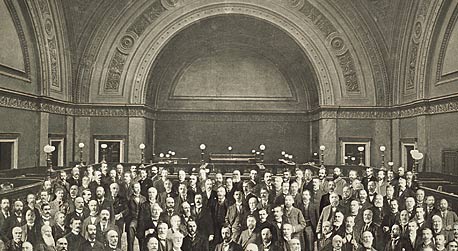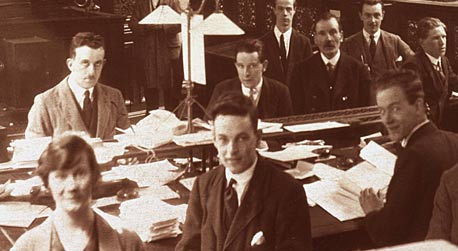1890-1920

Photographic montage of the managers of The Royal Bank of Scotland in 1899
Photographic montage of the managers of The Royal Bank of Scotland in 1899
By the end of the 19th century and the dawn of the 20th, the gradual emergence of bigger banks, with large branch networks and sizeable capital, was making it harder for small local banks to remain viable. Many merged with larger competitors in this period, leading (in England and Wales) to the emergence of the 'Big Five' dominant names, two of which eventually became part of NatWest. Meanwhile, supporting international trade became a greater concern for banks.
The outbreak of the First World War in 1914 brought new challenges. Banks were called upon to sell and support government war loans and comply with wartime trading controls, and also had to cope with staff shortages. To keep banks running while male staff were away on active service, women were employed in large numbers for the first time. Although many of them left after the armistice, banking would never again be an all-male profession.
Another workplace revolution was taking place at the same time. Machines were arriving in offices everywhere. In the banks, typewriters and adding machines became popular, permitting machine-accounting, the systematic generation of bank statements and the handling of ever-growing numbers of accounts without needing a simultaneous increase in staffing.









